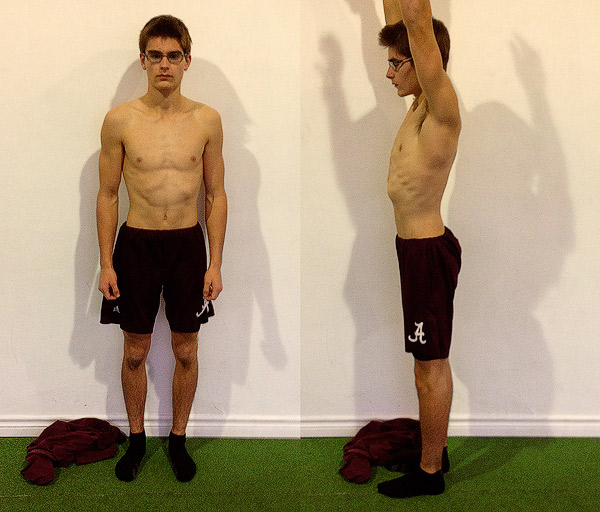
Why is one of my shoulders higher the other? And one pec bigger than the other?
My left shoulder has been higher than the other for as long as I can remember. I always thought of it in a superficial way, and figured it must be because I always carried my backpack slung over my right shoulder, pushing it down. Marco had the same thing, but thought it had to do with his skateboarding habits.
We were both sort of right… but mostly wrong.
Both are caused by the same thing: the fact that our bodies are innately asymmetrical. Our brain has a left and right side, and both perform different functions. Our hearts and livers are on just one side of our bodies. The right diaphragm is bigger than the left and has a longer attachment on the spine. Our left and right lungs expand to different degrees. One hand usually possesses more find motor control than the other. We usually favour one leg over the other as well, as Marco discovered when he was skateboarding.
It’s no wonder that over the course of our lives we fall into patterns of asymmetry, and that these effects can be seen when we look in the mirror.
If you go and look at the mirror right now, you will probably notice your left knee rotates out and your right knee rotates in. You may also notice that one shoulder sits higher than the other—usually the left. Another common compensation is a right rib hump. Your right rib on the backside will be more filled with air due to this twisting of the ribcage. One pec might thus grow bigger than the other and sit on your rib cage a little differently. If you don’t have a mirror handy, this pelvis/rib twist usually looks something like this:

For most people this isn’t a problem. The links between posture, performance and injury are iffy, since our bodies are so good at creating functional compensation patterns. It’s hard to tell whether they really have a large impact on one another, especially when we’re not currently injured or in pain. Better posture and better symmetry could theoretically improve your mood, your confidence, your breathing, your anxiety, your strength. It’ll certainly make you look better too. And if you’re currently in pain, it might help you get rid of it.
A good weightlifting program will do a good job of this, provided you develop good habits, train in a balanced way, and lift symmetrically. Even just learning how to squat well and squat heavy can work wonders.
Sometimes it can take a little extra work though. Here’s a good drill to help you learn to hold your hips in a good position while moving. Since most postural issues stem from the hips, mastering this will usually address the asymmetry at its root and allow you to develop a more balanced upper body.
Take it away, Marco:


Muscle-Building Mini-Course via Email
Sign up for our 5-part muscle-building mini-course that covers everything you need to know about:
Here are some related articles